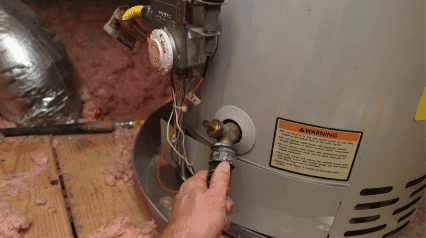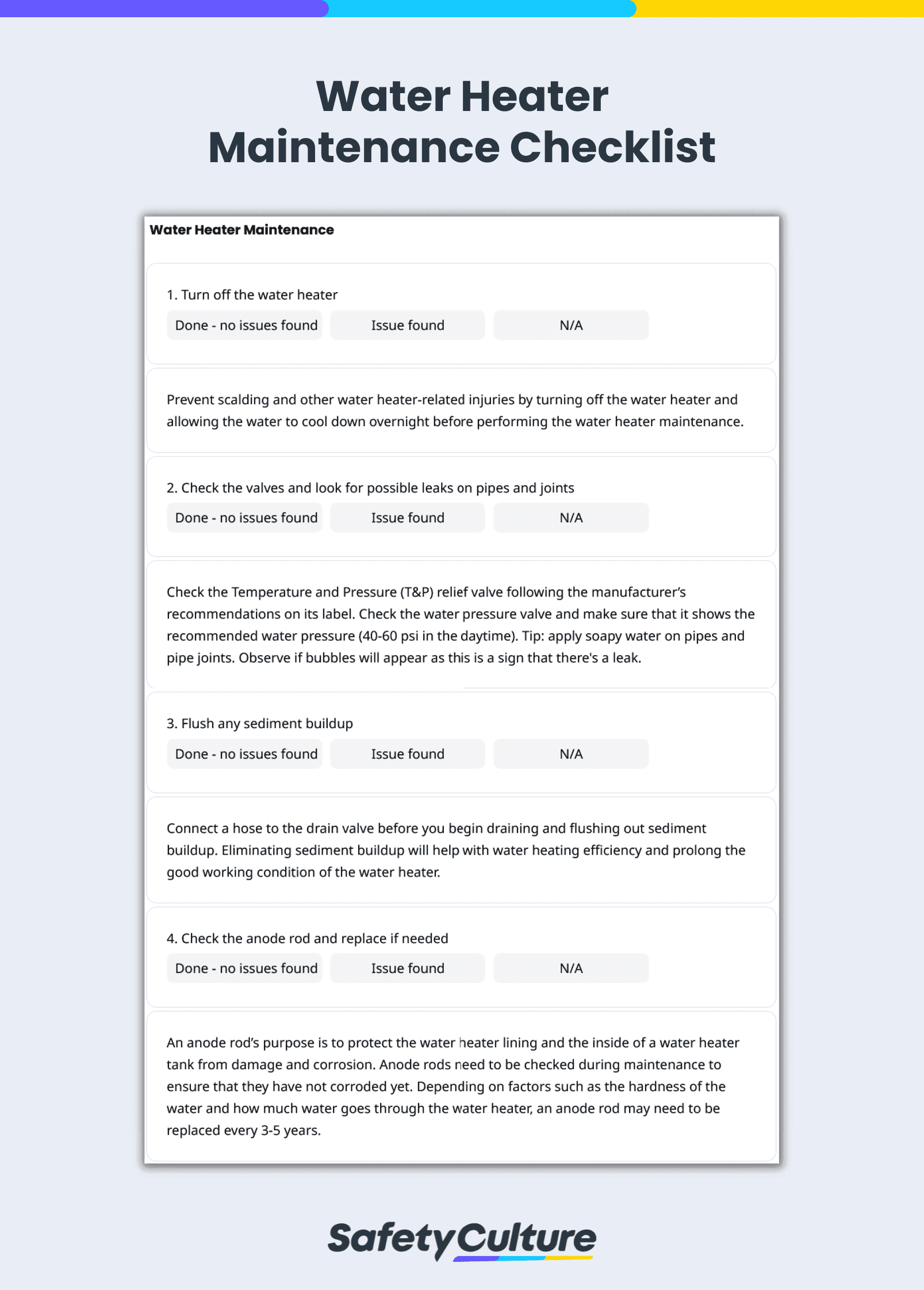What is Water Heater Maintenance?
Water heater maintenance is the regular preventive maintenance of water heaters used for commercial and residential buildings. Conducted by contractors, facility managers, and homeowners using checklists, water heater maintenance keeps energy consumption efficient, prolongs the optimal working condition of water heaters, and promotes safety by proactively catching issues before accidents can occur.
Accidents involving heating equipment caused thousands of home fires and millions in damages. Conducting regular water heater maintenance can help prevent these and other types of accidents involving water heaters from happening.
The Dangers of Neglecting Water Heater Maintenance
For gas-fired water heaters, fatal accidents can occur if water heaters are not regularly checked for issues such as potential gas leaks. As for heaters with tanks, they have safety features that allow excess temperature and pressure to escape when there’s too much buildup. But if these safety features are not properly checked by professionals who make sure they are still in good working condition, tank explosions can happen.
Water heaters can usually last for a decade without any maintenance. Conducting regular maintenance, however, can help extend the good working condition of water heaters and help discover issues that could’ve gone unnoticed due to neglect. Water heaters with tanks can have sediment buildup over time, especially in areas where hard water is more common and this sediment buildup will negatively affect the efficiency of energy spent on heating water.
How Often Should it Be Maintained?
For industrial or commercial water heaters, annual maintenance is ideal while every six months is recommended for home use. Consider doing the maintenance during autumn just before the water gets colder and needs more warmth from heaters to reach the desired temperature. Also, if hard water is used in your area, water heater maintenance should be done more often in order to properly flush and drain the tank in order to remove mineral buildup and formed sediments.
During the maintenance, it is crucial to check any manufacturer’s warnings and follow the maintenance checklist intended for your water heater. By heeding the warnings and following the recommended steps on the checklist, you can help ensure that the maintenance is done safely and correctly.
What is a Water Heater Maintenance Checklist?
Used by professional service providers or contractors, facility managers, and homeowners, a water heater maintenance checklist serves as a guide on what to do and what to check during water heater maintenance.
What Should it Include?
The previously featured water heater maintenance checklist is broken down into 5 steps, these are tasks that can also be observed as water heater maintenance tips:
- Turn off the water heater – Prevent scalding and other water heater-related injuries by turning off the heater and allowing the water to cool down overnight before performing the maintenance check.
- Check the valves and look for possible leaks on pipes and joints – Check the Temperature and Pressure (T&P) relief valve following the manufacturer’s recommendations on its label. Check the water pressure valve and make sure that it shows the recommended water pressure (40-60 psi in the daytime). A useful tip when looking for possible leaks: apply soapy water on pipes and pipe joints and bubbles will appear should there be a leak.
- Flush any sediment buildup – Connect a hose to the drain valve before you begin draining and flushing out sediment buildup. Eliminating sediment buildup will help with water heating efficiency and prolong the good working condition of the water heater.
- Check the anode rod and replace if needed – An anode rod’s purpose is to protect the water heater lining and the inside of a tank from damage and corrosion. Anode rods need to be checked during maintenance to ensure that they have not corroded yet. Depending on factors such as the hardness of the water and how much water goes through the water heater, an anode rod may need to be replaced every 3-5 years.
- Refill the water heater tank – Refill the tank by closing the drain valve and opening the cold water supply valve. Open a hot water faucet and let the water out for around 3-5 minutes to make sure that there’s no air remaining in the tank before you turn the heater back on.
Please note that it is important to check the manufacturer’s instructions on the use and maintenance of the heater and that it is advisable to get a professional who is familiar with conducting water heater maintenance if you are not comfortable doing it on your own.


